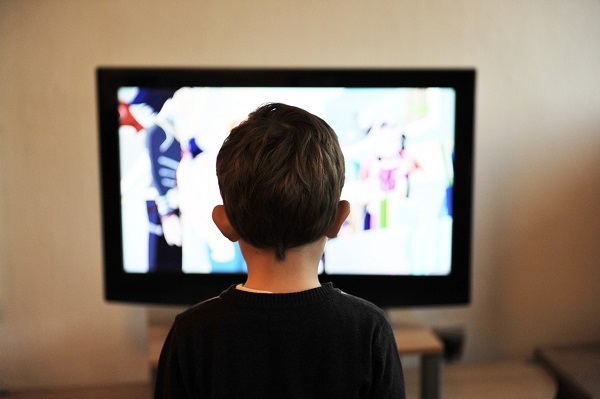
Why watching TV and movies is better together
This post really hit home for me. A Friday night tradition at our house is pizza, popcorn, and a movie or TV show. Experiencing the content together offers opportunities for meaningful conversation with your kids. It’s amazing how much your kids can learn from great media! – Jennifer Ehehalt, Pittsburgh Regional Manager at Common Sense Media. Common Sense has the largest, most trusted library of independent, age-based, and educational ratings and reviews for movies, games, apps, TV shows, websites, and books. Now more than ever, families need a trusted guide to help them navigate this ever-changing world of media and technology. Jennifer’s passion is to help families make smart media choices. You can find her on Twitter @Jehehalt.
By Michael Robb
Common Sense Media
Parents tend to worry about exactly how much screen time is appropriate for kids. The guidelines can be confusing — and there’s no magic number that’s right for all families. The truth is what kids are watching and how they’re watching are key parts of the equation. And when parents are involved — by sitting together, asking questions, and explaining when necessary — the benefits multiply.
In my role as director of research for Common Sense Media, I’m immersed in studies about how media impact kids. While the amount of time kids spend with screens is important, research shows that watching TV and movies with your kids, aka “co-viewing,” has a range of positive effects. It can support early literacy skills, boost empathy, and even help manage aggression after exposure to violent media. How you interact is important, though. As this study of young Sesame Street viewers shows, kids whose parents asked them to name letters and numbers during the show learned better than when parents did the naming.
Co-viewing is similar to the way many parents treat reading to kids, especially for preschoolers and other young children. It’s a time to cuddle, focus your attention together, and share the experience of seeing and hearing the same thing, just like story time. In a study of parents who applied the techniques of high-quality reading to watching videos, kids scored higher on comprehension and vocabulary measures than kids whose parents didn’t use the techniques.
Of course, you don’t have to co-view every single show. As a parent of two young sons, I try to watch with my kids when I can, but it’s not possible to always co-view with them (because I need to do something else or because I can handle only so many episodes of PJ Masks in a row). I do, however, use their favorite shows as a way of making conversation with them later. We at Common Sense don’t encourage media at meals, but we certainly encourage parents to talk about media when you’re sitting at the table!
So how do you actually co-view and reap those benefits? Try these tips with young kids:
Focus their attention. Help kids pick up story details by verbally pointing out specific parts of what you’re watching, whether it’s a strange new word, a confusing part, or just an interesting detail. Say: “Look at his shiny new shoes!”
Encourage them to think about the order of events. This helps kids think about sequence and cause and effect. Either after watching the show or before watching something they’ve seen before, say: “Can you remember what happened after the dog got loose?” You can also pause the show and ask: “Tell me what’s happening now.”
Strengthen their understanding. Ask who, what, when, why, where, and how questions to get your kids to use new words and think through what they’ve seen. Say: “Who is that? Where do they live? Why are they doing what they’re doing?”
Make it relatable. Have children link what they see to their own lives. For example, “Wow, they’re angry. What did you do the last time you were angry?” This helps kids learn to express themselves, cope with feelings, and understand others better.
Expand on what kids say. Rephrase information from the show or things your kids have said back to them, relate details to your own life, or add new information. These are all ways to improve conversation skills, teach kids about the world, and bolster your connection. Say: “Loud noises scared Daniel Tiger. I don’t like loud noises either. How do you feel when you hear loud noises?”
Here’s a badly kept secret: Kids like to talk about media — a lot. Take advantage of this, as it will open up all kinds of opportunities to find out about the things your kids are interested in, the things that are important to them, and even what’s happening in their lives. You may be surprised at where your conversations lead.